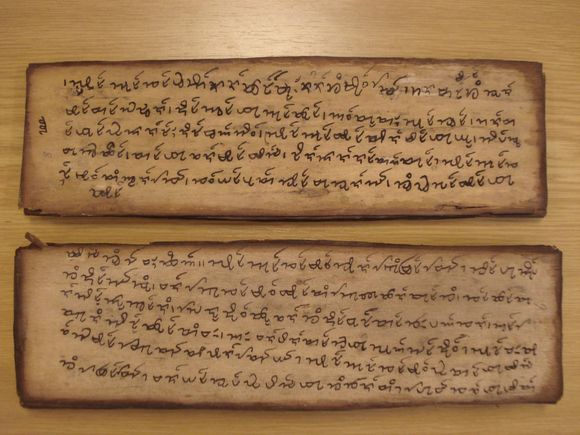The Dibrugarh University, in collaboration with the Nanda Talukdar Foundation (NTF), has initiated a project to preserve and digitise over 1,000 rare manuscripts of Assam, making them accessible to the public.
In a statement released on Thursday, NTF highlighted that this initiative will provide access to a vast collection of rare and previously unseen Sanchi Paat (leaves of the Sanchi tree) manuscripts for individuals around the globe.
The university recently signed a Memorandum of Understanding (MoU) with NTF to safeguard Assam's rich literary heritage.
Under this agreement, NTF will act as the knowledge partner in the preservation and digitisation of the ancient manuscripts housed in the Assamese Department of the university.
These manuscripts, written in old Assamese, Sanskrit, Tai, and Bengali, encompass various subjects, including Vaishnavism, Buddhism, and ancient customs of Assam, reflecting the region's diverse cultural and religious heritage.
The digitisation effort aims to place these invaluable resources in the public domain, allowing scholars and researchers worldwide to access them.
The initiative marks the first large-scale effort to make rare Assamese manuscripts publicly available, ensuring their preservation for future generations.
Commenting on the development, Mrinal Talukdar of NTF stated, "The digitisation of these manuscripts is not only a matter of preservation but also opens the door to knowledge. We are honoured to be part of this groundbreaking project."
Dibrugarh University Registrar Dr. Parmanand Sonowal expressed that this partnership represents a significant step towards making Assam's vast and diverse heritage accessible to the world.
"We hope this initiative will inspire further efforts in preserving our cultural legacy," he added.
What is Sanchi puthi?

In ancient times, long before the advent of printing technology, all written documents existed in the form of manuscripts. A manuscript, known as hastalipi, is a handwritten document created on various materials, including vellum, parchment, papyrus, and paper.
In Assam, a unique manuscript called the Xasi puthi was crafted from the bark of a specific tree. The Assamese refer to manuscripts as 'Sanchi puthi' (books made from the leaves of the Sanchi tree).
These manuscripts are produced using different writing materials, such as Sanchi pat (leaves of the Sanchi tree), Sanchi bark, Tulapat leaves (from the Tula plant, used for cotton preparation), talpat (palm leaves), and others.
Among these, Sanchipat and Tulapat were the primary media for writing; however, due to the widespread use of Sanchi bark, the term 'Sanchi puthi' or 'Sanchi book' became prevalent.
Research from the University of Nebraska-Lincoln indicates that Sanchi manuscripts have been in use since the era of the Ramayana, around the 4th century B.C.
Scribes, or writers of Sanchipat books, were highly esteemed for their artistry and dedication.
They meticulously crafted beautiful, well-organized scripts, paying close attention to detail and striving for minimal spelling errors.
The writing process was considered sacred, blending artistry with profound respect for knowledge.
The unique craftsmanship behind Sanchipat books
Creating Sanchipat books is an intricate and labor-intensive art, passed down through generations.
The process begins with the careful harvesting of bark from mature Sanchi trees, transforming it into durable leaves suitable for writing.
-
Bark harvesting and drying: The first step involves carefully removing the bark from the tree and allowing it to dry until it becomes crisp. This initial drying is crucial for preparing the bark for further processing.
-
Cleaning and sieving: The dried bark husks are cleaned with rice straw salt and then sun-dried. Once dried, the bark is cut to size and sieved using bamboo mats to eliminate any accumulated dirt.
-
Grinding and pressing: Stones are used to finely grind and smooth the leaves. After another round of drying, heavy objects, such as iron, are used to press the leaves flat.
-
Final preparations: The leaves are rubbed with mud to level the surface, and peanut oil is applied to prepare it for writing. Occasionally, hengul-haital is used to brighten the ink.
-
Drawing lines and preparing for writing: Finally, lines are drawn at equal distances with a fine pen called Krit Diya to guide the scribe. A central hole, referred to as the navel of the book, is made following traditional instructions from the Yogini Tantra.


